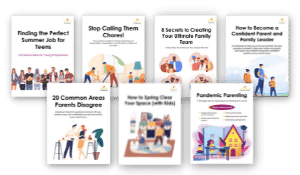- Home
- »
- Family Bonding Challenge
- »
- 5 Ways to Show...
5 Ways to Show Your Kids Where Food Comes From

Age: 5+
Time: 30+ minutes
Materials: depends on activity
Focus: community engagement
Summer is the perfect time to teach your kids where their food comes from. It doesn’t just magically show up at the grocery store after all. Somewhere there’s a farm that grew that food and people who took care of it. There are people who had to harvest that food, wash it, sort it, load it into trucks and bring it to you.
Learning where food comes from helps all of us, including our children, make more informed choices, can help with expanding our food palettes, teaches us to be more thoughtful about our waste, and generally more grateful about what we have.
With each of the activities listed below, remember that it’s your conversation and engagement about what you’re seeing and doing together that makes the biggest impact on your child’s learning.
It’s one thing to just do the activity, it’s another to plan the trip together, discuss expectations versus realities, develop sense memories through tasting samples and feeling the sun on your skin imagining what workers go through to gather all the food that shows up in the grocery store ready for our consumption.
Ways to Help Your Child Learn Where Food Comes From
Pick one or more activities from our list of five things to do to make sure your children have a better understanding of where food comes from.
-
Visit a farmer’s market.
Going to a farmer’s market allows your family to explore and purchase food that is grown locally. It gives you an opportunity to see the variety of food your community offers and, sometimes, to get food that isn’t sold in your local grocery store.
The food is usually fresher than what is available from the stores as well, and that quality comes through in taste! It also gives you a chance to meet the farmers who grew the food and talk with them.
As a family, you can talk about things like the seasonality of foods, your carbon footprint of eating locally, and when purchasing organic makes the most sense.
If you find something that looks really appetizing, ask the farmer if their farm is open to the public, which leads us to number two on our list of learning where food comes from.
-
Take a farm tour.
If you’ve gone to a farmer’s market, hopefully, you met some farmers and found at least one that was open to giving you a tour. If you haven’t been to a farmer’s market, that’s okay. Just Google “local farm” or “farm tours” and where you live or something similar.
If there aren’t that many that turn up, try looking on social media. Some smaller farms will have social media accounts even if they don’t have a website. Get in touch with a few, and then head out for an up close and personal view of what it takes to grow food. You can even try a longer overnight farm stay.
More than likely, your children will be amazed at the amount of space it takes to grow many crops, how many people are involved in cultivating it, how big and loud equipment like tractors can be, and the impact of the “ugly food” movement.
-
Grow your own food.
Even if you live in an apartment or small house, you can still grow food with growing towers like this.
Need some more inspiration for a window box or small planter? Here is a list of nine vegetables you can grow indoors. If you have a backyard or small yard, you have more options for what you can plant in a family garden. Community gardens are another great way to get started.
Kids love to dig in the dirt and will have the opportunity to nurture and watch the plants as they grow. They will quickly learn about pests and just just how easy or difficult it can be to grow various types of food. There’s no better way for kids to learn about food than actually growing it themselves. If growing your own food just isn’t your forte, no problem. See our next activity.
-
Pick your own food.
Find a local farm where you can pick your own food. Just Google “pick your own food/fruit” or “UPick” and where you live. At the very least you’ll probably find some farms where you can pick your own berries or apples.
Picking your own food will give your kids a chance to see how the food grows (on a bush or tree, for example) and to learn what to look for to pick the best ones. They’ll remember what they learned when they’re picking out the same food at the grocery store later on. That makes for great memories and conversation.
You will not only get some great, fresh food but also be learning about seasonal food that grows in your area, which is our next activity.
-
Learn about seasonal foods in your area.
If you have a chance to pick your own food, you’ll be learning about some of the foods that grow in your area seasonally. If you aren’t able to physically go pick, you can still learn about the foods that grow in your area seasonally.
Then the next time you head to your local grocery store, make sure to opt for the foods that are in season. They’ll most likely be locally grown and fresher since they didn’t have to travel a long way to get to your store.
Join the Community!

Get Excited About Your Future
Delight your inbox with monthly lessons carefully chosen to help you grow as a proactive parent who's always looking to learn more about raising a strong family team.

Monthly Live Engagement
Join our monthly live chats to discuss each month's topic in-depth and get all your questions answered.

Worksheets and Guidebooks to Grow Better Together
Members receive many of our guides for free and access to deep discounts to the entire collection to continue growth and development together.
Carolyn Savage
Carolyn is a writer, proofreader, and editor. She has a background in wildlife management but pivoted to writing and editing when she became a mother.
In her "free time" she is a 4th Dan (degree) Kukkiwon certified black belt in Taekwondo, loves learning to craft from her enormously talented children, and then teaching what she's learned to her enormously talented grandmother. Read full bio >>


